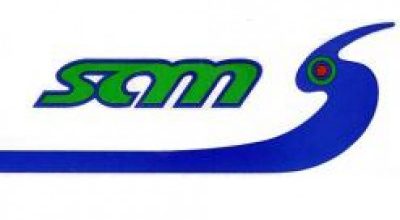Netflix’s crime series ‘The Hijacking of Flight 601’ chronicles the hijacking of Colombian airline Aerobolivar’s Flight 601, which departs from the national capital Bogotá. Francisco “Toro” Solano and Eusebio Borja, two Paraguayan hijackers, then assume control of the aircraft to demand $200,000 and the release of a group of political prisoners. In reality, the hijacked plane was HK-1274, which belonged to the Colombian airline, Sociedad Aeronáutica de Medellín or SAM. The airline was founded in 1945 and operated nationally and internationally for more than six decades. The aircraft became a part of the extensive history of Latin American flight hijackings, which were common in the 1960s and 1970s!
SAM Colombia and HK-1274
Sociedad Aeronáutica de Medellín was a subsidiary of Avianca, the largest airline in Colombia and the flag carrier of the country. The company was founded in 1945 as an airline to serve the city of Medellín. After initially targeting the cargo market to and from Miami, the airline expanded its operation to several other Colombian cities such as Bucaramanga and Cartagena, and nations like Panama. In 1958, the company started to transport passengers, which expanded with the introduction of Lockheed L-188, an American airliner built by Lockheed. HK-1274, the aircraft Francisco “Toro” Solano and Eusebio Borja hijacked in 1973, was a Lockheed L-188 Electra.

The journey of the aircraft began on May 30, 1973, from Bogotá with stops at Cali and Pereira and Medellín as the destination. Francisco and Eusebio boarded the flight from Pereira, a Colombian city that had a large Paraguayan community. Twelve minutes after they boarded, they wore hoods and hijacked the plane with guns. After filling the tank in Medellín, their first stop was Aruba, a country located in the Caribbean Sea that belonged to the Kingdom of the Netherlands. After explaining the demands, the hijackers threatened to blow up the plane with the bombs they didn’t really have with them.
Meanwhile, the SAM airline started negotiating with Francisco and Eusebio through the lawyer Ignacio Mustafá, the inspiration behind the character Pirateque. As a response to the demand for $200,000, Mustafá offered the hijackers $20,000. While in Aruba, the duo released around 40 passengers, who were mostly women and children. As the hijackers, crew members, and passengers of the flight were waiting in Aruba, the Colombian authorities made it clear that they were dismissing the demands of the former duo. The responsibility fell onto the hands of the airline. The SAM officials, under the leadership of Mustafá, were open to negotiations but he couldn’t offer $200,000 at all.

Eventually, SAM’s secretary general of the time and Mustafá arrived in Aruba to negotiate with Francisco and Eusebio by boarding the flight. The hijackers were not ready to let them board the aircraft. By then, a few more passengers managed to escape through the rear emergency door. The hijackers forced the pilot to take off but they returned to Aruba again. The local authorities then asked the hijackers to replace the exhausted crew members. SAM arranged replacements, who included Edilma Pérez and María Eugenia Gallo, the central characters of the Netflix crime drama. The airline also offered $50,000 to the hijackers for accepting new crew members, who eventually boarded the flight.
The aircraft continued to make stops in several airports, specifically the ones in Guayaquil in Ecuador and Lima and Mendoza in Peru. While they were at the airport in Mendoza, the remaining passengers were asked to leave the plane. Eusebio and Francisco escaped individually in Resistencia, Argentina, and Asunción, Paraguay. The remaining crew members took the aircraft to Buenos Aires, the capital city of Argentina. By the time the hijackers left the plane, around sixty hours had passed. HK-1274 landed in the Argentinian city after traveling around 22,750 kilometers.
SAM remained a prominent airline in Colombia after the hijack for years. The company was the main sponsor of the Colombian soccer team Atlético Nacional in the late 1980s and early 1990s. The airline was shut down in 2010 after it was completely merged with Avianca.
Read More: The Hijacking of Flight 601: Exploring All Filming Locations


You must be logged in to post a comment.